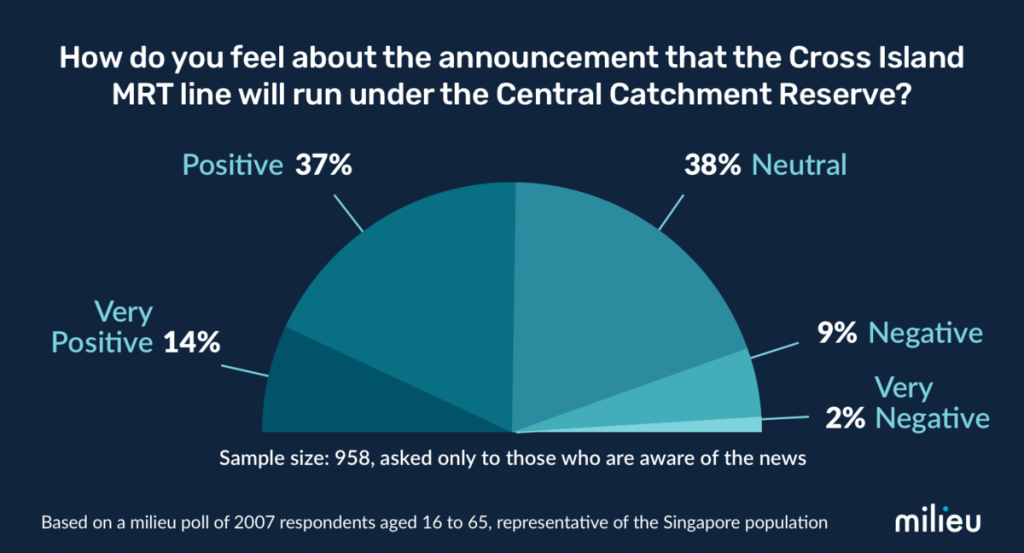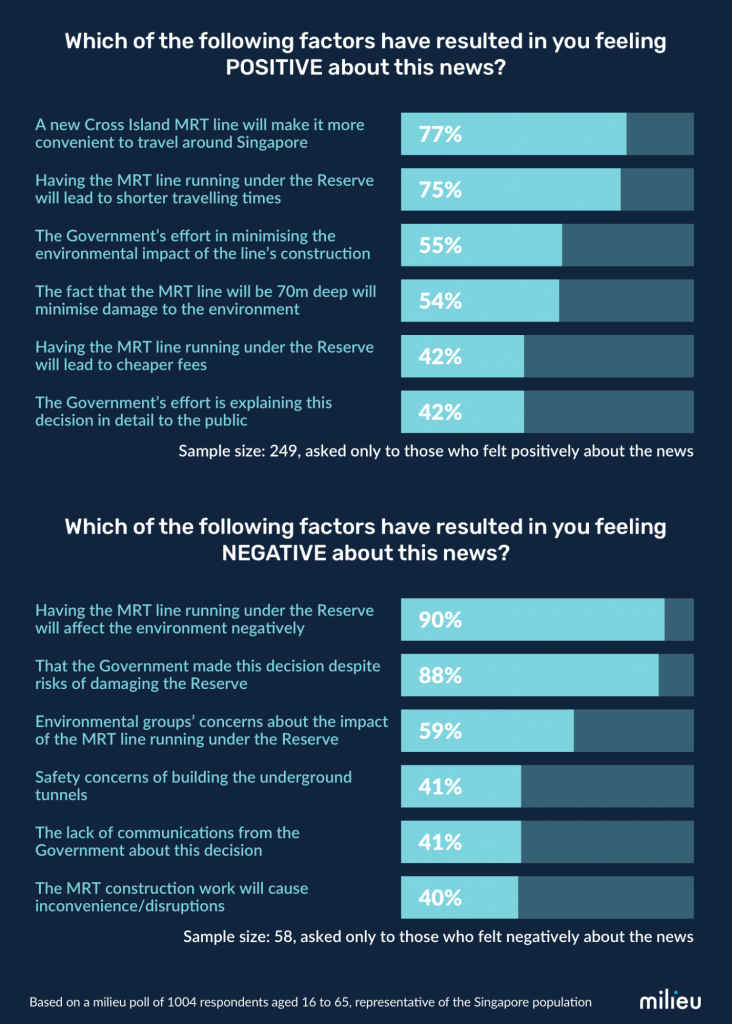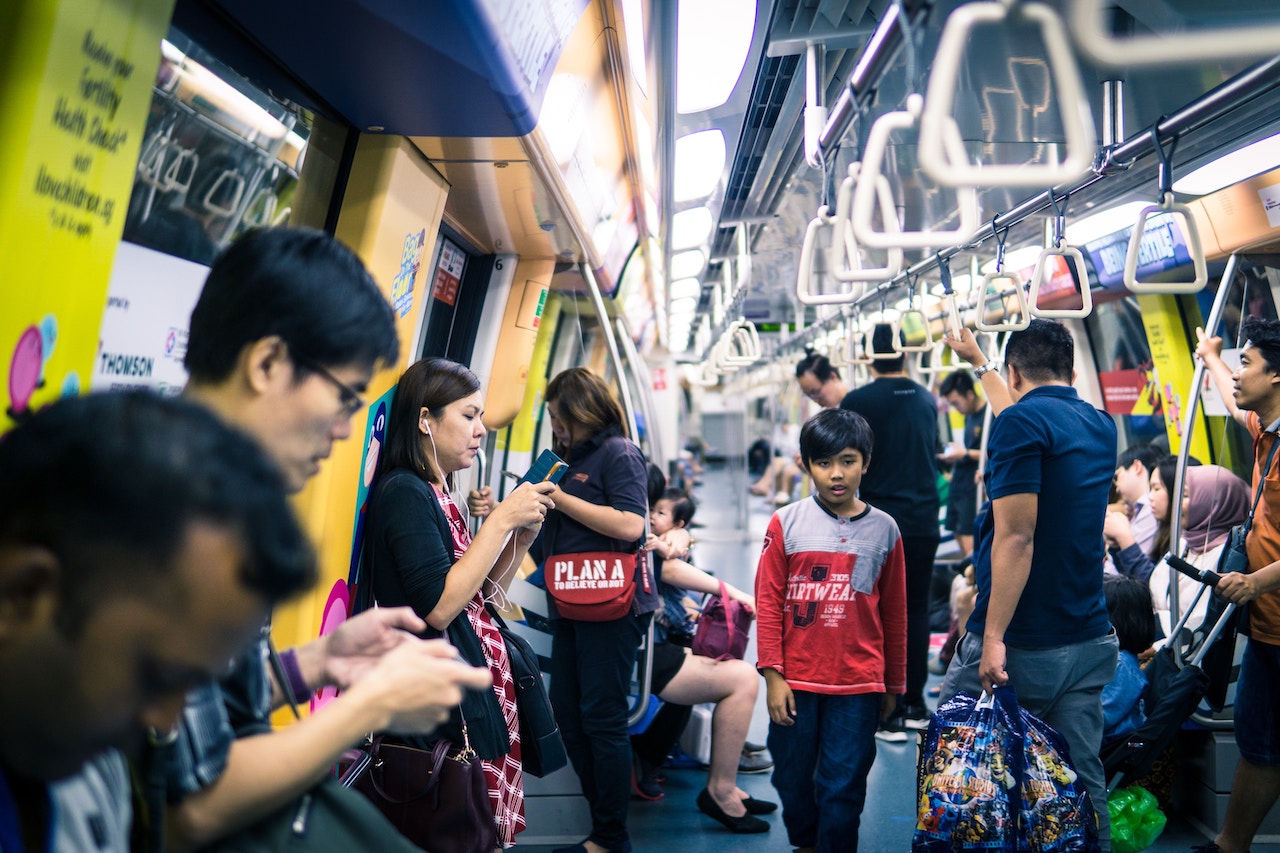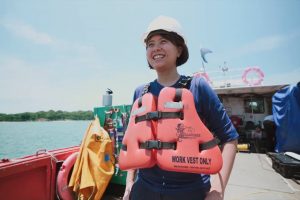On social media, netizens were quick to question the government’s choice, scrutinising the effectiveness of the environmental impact studies and consultations that were conducted with environmental groups.
In particular, discussions surrounding the trade-off between environmental protection and urbanisation were rampant. Why, after years of research and consultation, did we choose to go under instead of around the reserve? Are we all really willing to sacrifice Singapore’s already-limited supply of flora and fauna in exchange for shorter travelling times?
These were burning questions floating around on the Internet. And yet—surprise surprise—it seems that the majority of Singaporean Youths supported this decision.
Milieu, an independent research agency, surveyed the opinions of 2,007 Singaporeans aged 16-65 and found that only 11% felt negatively towards the CRL project.

On the other hand, and in contrast to the social media backlash towards the CRL project, positive attitudes towards the CRL stemmed from greater knowledge on the issue—mainly from the cost savings, convenience and accessibility gained, as well as the presence of mitigation efforts to minimise resultant environmental damage.


Being practical adds a new layer of nuance to environmental issues. We can no longer convey idealistic green futures, but need to weigh the heavy economics behind every sustainable action.
The hard truth is that most of us are willing to forgo a small part of the environment in exchange for convenience, and cost savings. As much as some may hate to admit it, we are all fighting, to varying extents, for our own self-interest in a world with limited resources. Do we care about the environment? Yes, we absolutely do. Do we care about our own benefits? Yes, we do, and there is no shame in that. The next step then, is to make a judgement call after carefully balancing both sides of the equation.
This delicate balance between one’s self-interest and care for the environment cannot be done without first understanding the situation in its entirety. Back to the main issue, the decision to go directly under Singapore’s largest nature reserve instead of skirting around it was not a hasty, or an easy one to make.
In the six years since its first announcement, the Land Transport Authority (LTA) engaged nature groups, heritage groups, residents and grassroots leaders, as well as appointed an internationally acclaimed consultant for a two-phased Environmental Impact Assessment (EIA) involving relevant stakeholders.
This led them to the conclusion that the environmental damage from going under the reserve will be minimal, or in the words of Transport Minister Khaw Boon Wan, “almost completely eliminated”. By burrowing the equivalent of a 25 story HDB block, no surface works will be conducted in the Central Catchment Reserve itself, protecting the flora and fauna within. And not only that, going under—instead of around the reserve—promises to reduce overall construction cost by $2 billion, our travel fare by 15% and cut travel times down by six minutes.
On an individual level, this means that less of your hard earned income tax money is spent on the project, you save money and time whenever you take the CRL, and you can also ride the MRT line guilt-free knowing that you didn’t destroy Singapore’s Catchment Reserve in the process.
If that is not a win-win situation, I’m not sure what is.
There will be other projects that threaten to damage the environment, and will again bring to light the difficulty of maintaining a balanced perspective.
According to the Land Use Plan, an additional 5,600 hectares of land are needed by 2030 to cater for a population growth to between 6.5 and 6.9 million. With limited land, Singapore will be forced to explore new spaces. We will need to relook at previously untapped areas and find ways to make them suitable for people to live, work and play in.
Who knows, our future BTOs may be built on the sea, or above previously constructed roads and canals. After all, building a float to house homes, offices, vegetable farms and even beaches around it will cost the same as reclamation, with our calm equatorial waters being ideal. In fact, Singapore may have underused land in drainage canals, considering that the space is only in use during heavy rainfalls. What we need is the ability to see old problems with new lenses.
As Singaporeans, we need to look at the big picture, think critically instead of viscerally, and ask ourselves: to what extent are we willing to inconvenience ourselves in exchange for the welfare of our environment?
This year, NYC has been working together with Singapore’s Youths and the Singapore Youth Action Panel to craft a youth vision for Singapore in 2025. After extensive rounds of consultation and polling, environmental sustainability was shown to rank highly amongst youths in their vision for Singapore’s future.
Find out more about NYC’s Youth Action Plan here.






